Mazda 3 / Axela
Debut: 2009 |
||||||||
The Axela, meaning “excellent”, is better known to the world as Mazda 3. The first generation Mazda 3 never thrilled AutoZine as much as it did to American car magazines. While the latter praised its driver appeal – bear in mind that they used to drive Ford Mustang or Chevrolet Impala, we argued that it neither inspired as much as Ford Focus or ran as refined as Volkswagen Golf. Moreover, its design and packaging left a lot to be desired. That’s why we had never recommended this car to our readers. When I saw the new generation Mazda 3 in person, a feeling came across my mind: This time it might be right. Why? Like most people, I am easily influenced by great styling – didn’t you notice that an Alfa Romeo would earn at least 3 stars no matter how bad it drives ? The new Mazda 3 is not as beautiful as Alfa Romeos, of course, but its bold design is a refresh to our eyes. Up front, it looks as if an evolution of RX-8, with a dominating laughing mouth and heavily sculpted flanks to differentiate from conventional designs. Its three huge intake openings look large enough to feed a fire-breathing twin-turbo V10, although a closer look will find half of those areas is actually sealed by black plastic panels. Turn to the side, two characteristic lines sweep upward across shoulder and sill level, delivering a dynamic and sporty feeling. The tail is not as interesting though, ranging from ordinary in hatchback form to dull in sedan form. The flashy taillights and complicated front end might not resist the test of time very well. However, it is undeniably a head-turning design.
The aggressive design doesn’t look beneficial to aerodynamics, but in fact the new Mazda 3 has the lowest drag coefficient in the class – 0.28 for the entry-level sedan or 0.30 for the hatchback. This must thanks to the extra works its engineers done to smoothen its underbody airflow, such as adding wind deflectors and covering uneven mechanicals. Nevertheless, one thing we didn’t like in the old Mazda 3 persists in the new car: poor packaging efficiency. The Mazda 3 is large by the norm of C-segment. Measuring 4460 mm in hatchback form, it is longer than Volkswagen Golf VI by 260 mm and Renault Megane III by 195 mm. Its 2640 mm wheelbase is also at the long side of the class, but its cabin is no more spacious than an average family hatch. 4 six-footers will barely fit the cabin with no space to spare. Tall guys at the back will find their heads rub against the sloping roof of sedan. The boot is not only pretty small, but its narrow aperture and high sill make loading and unloading inconvenient. Mazda did not pay a lot of attention to the details of interior. Fortunately, the cabin looks and feels much more modern. While we are not fans of its dashboard design – which is a little bit boring (why not simply copy the design of RX-8 ?) – it is nonetheless well put together, with tight assembly gap and soft-touch plastics at places where matter. It won’t challenge Volkswagen or Peugeot 308 for perceived quality, but you know the Hiroshima-built Mazda should be relatively reliable during its lifetime. Not so great is the tiny (4.1-inch) LCD screen and the controls of satellite navigation, which is only accessible through steering wheel buttons so that your front passenger cannot help you.
Underneath the sheet metal is an updated version of the previous C1 platform, one that shared with Ford Focus and Volvo S40. Merits of the C1 include “control-blade” multi-link rear suspension and a better-than-usual electro-hydraulic power steering. What the new Mazda 3 improved on is NVH suppression. The monocoque chassis now employs 17% high-strength steel at critical points. As a result, chassis rigidity is increased by 7 percent, while weight is down by 15 kg, claimed Mazda – although our figures show that its kerb weight is between 25 and 60 kg more than the old car depending on engines. NVH suppression is also achieved by using stronger subframes, more rigidly mounted steering column and upgraded sound deadening. Three petrol and three diesel engines are offered. The MZR petrol four-pot family displaces either 1.6, 2.0 or 2.5 liters, producing 105hp, 151hp and 167hp respectively. All have aluminum head and block, intake variable valve timing (S-VT) and variable intake manifolds (VIS) to achieve a sweet-revving manner and good output. The 2.0-liter unit (except American version) employs direct fuel injection, while the long-stroke 2.5-liter uses twin-counter-rotating balancer shafts to cancel vibration. All are likable engines. Diesel engines include a PSA-sourced 110hp 1.6 turbo and a pair of inhouse-built 2.2-liter turbo in either 150hp or 185hp form. The latter enables hot hatch performance, i.e., 0-60 mph in 7.7 seconds and 132 mph top speed, but the small diesel is actually more refined. Moreover, we expect few customers can afford the big diesel, which should serve Mazda 6 better.
When the Mazda 3 cruises on highway, you will notice its improved refinement. Engine, wind and suspension noise are vastly reduced, although tire roar is still evident. All petrol engines are smooth and eager, if not as tractable as the turbocharged engines from rivals. Both 5 and 6-speed manual box shift with the highest satisfaction, being slick, short and have good mechanical feel. The suspension feels firmer than most family hatches, but well damped, keeping the car composed over undulation. The steering is rather light and sensitive to surface textures, which needs constant correction at cruising. Enter a bend, the same sensitive steering makes the Mazda 3 feels agile and eager to steer. The steering wheel loads up at corner, providing good communication with the front wheels that most rivals have forgotten. It is certainly an engaging drive. There are bags of grip from the Yokohama 205/50 tires. Body control is as good as you can get from a small family car. However, when you push it to the very limit, you will find it doesn’t possess the depth of ability that its sister car Ford Focus has. It understeers slightly earlier, and the rear end doesn’t oversteer when you back off throttle mid-corner. This prevent it from being the ultimate driver’s car in the class. For sure, the new Mazda 3 deserves more recommendation than the old car, but it is not good enough to be a new class leader. While we love the way it drives, we are not so convinced with its interior space and details. We would also prefer it to show more vision by offering some downsized petrol engines and more green technologies. Volkswagen group is doing much better in this respect. |
||||||||
| The above report was last updated on 1 Jun 2009. All Rights Reserved. |
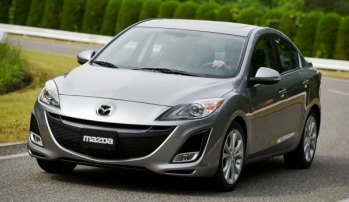
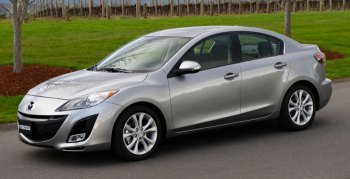
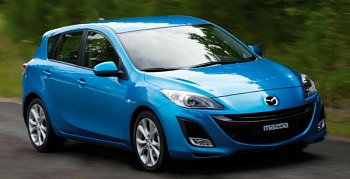
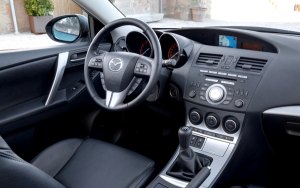
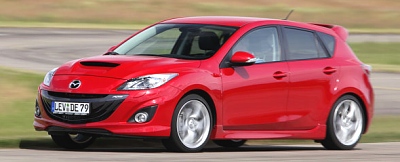
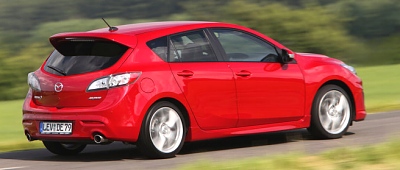

 Mazda 3 hatch 1.6
Mazda 3 hatch 1.6 Hide all
Hide all
